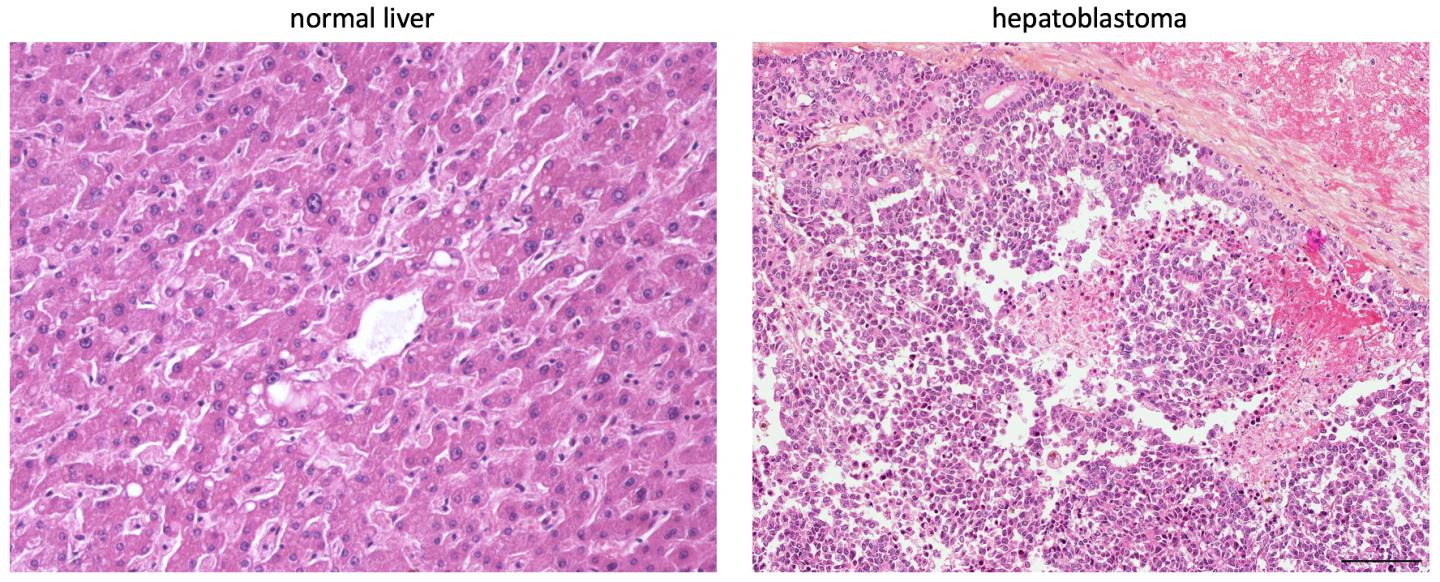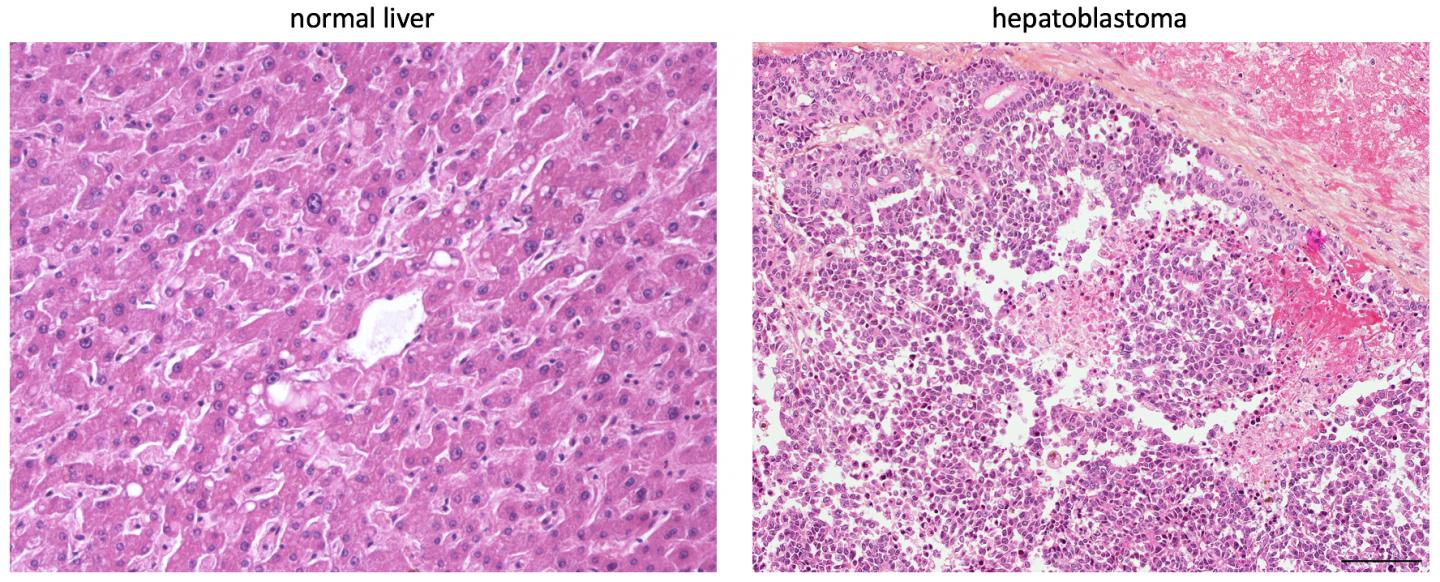
Credit: Etienne Meylan/EPFL
Hepatoblastoma is a rare pediatric liver cancer, usually diagnosed in the first three years of life. Histological methods are used to distinguish between the different subtypes of hepatoblastoma. EPFL scientists have now found metabolic differences between hepatoblastoma subtypes, and identified several biomarkers that can help obtain more accurate subtyping of the disease. The work is published in EMBO Molecular Medicine.
There are many subtypes of hepatoblastoma, the two major ones being fetal and embryonal. Clinically, pure fetal cases have the best prognosis. The way oncologists distinguish between the different subtypes is by staining biopsies and observing the tumor architecture. However, this is not satisfactory.
"When we compare tumors on the microscope, we know almost nothing about their differences," says Etienne Meylan, whose lab at EPFL led this study. "It's a little like comparing cars: only when we look inside at the engine we begin to understand what makes them so fundamentally different to each other. Our study shows that different types of hepatoblastoma use different nutrients, or fuels, to grow. Some use glucose, others might rely on fatty acids. In the era of personalized medicine this is important, as we want to be sure we block the right fuel for the right tumor."
Meylan's lab built on the genetics of hepatoblastoma, which involves frequent mutations in the gene CTNNB1. This gene produces the protein beta-catenin, which is involved in cell-cell adhesion and gene transcription. Because of its dual function, mutations of the CTNNB1 gene can have diverse and far-reaching consequences, including in cancers like hepatoblastoma. Beta-catenin is a component of a signaling pathway called Wnt/beta-catenin, which is responsible for regulating the expression of multiple genes. What is of interest is that many components of the Wnt/beta-catenin pathway are affected and overactive in various tumors.
Something that is becoming increasingly significant in oncology is that different types of cancers show characteristic metabolic profiles, e.g. in the way they produce, store, and use glucose, glutamine, fatty acids etc. Based on this, the EPFL researchers looked at the relationship of the CTNNB1 gene and the cell's metabolism.
The researchers first showed that beta-catenin, as part of the Wnt signaling pathway directly regulates the expression of a gene that produces a glucose transporter protein (GLUT3).
Next, they used RNA sequencing to identify molecular and metabolic features that are specific to hepatoblastoma. This approach revealed that several enzymes involved in the metabolism of glucose are overexpressed in embryonal hepatoblastoma cells as compared to fetal hepatoblastoma cells.
Finally, the scientists found that embryonal hepatoblastoma cells show high levels of glucose uptake. In addition, they also found that these cells are very sensitive to the perturbation of an enzyme involved in the cell's use of glucose, which might hint to a metabolically driven therapy in the future.
Working off their discoveries, the researchers used immunohistochemistry of three metabolic biomarkers to better distinguish embryonal from fetal components out of a large panel of human hepatoblastoma biopsies, collected from French and Swiss university hospitals.
The study shows that the Wnt/beta-catenin pathway is crucial for reprograming the energy management of tumor cells. It also provides a new, metabolic classification of human hepatoblastoma that can help oncologists develop novel diagnostic methods and even treatments.
"This paper is a milestone of upmost importance for our children with hepatoblastoma," says Professor Barbara Wildhaber, Surgical Director of the Swiss Reference Centre for Liver Diseases in Children (Hospital University of Geneva), who was not involved in the study. "As a further step towards personalized medicine, these discovered biomarkers allow for individual characterization of the children' liver tumor, helping us in risk stratification, and eventually allowing for an adjusted, personalized treatment."
###
Contributors
SIB Swiss Institute of Bioinformatics
Geneva University Hospitals
Faculté de Médecine Université Paris Sud
Ludwig Center for Cancer Research and Department of Oncology
Funding
Swiss National Science Foundation
Fondation Recherche sur le Cancer de l'Enfant (FORCE)
Reference
Stefania Crippa, Pierre-Benoit Ancey, Jessica Vazquez, Paolo Angelino, Anne-Laure Rougemont, Catherine Guettier, Vincent Zoete, Mauro Delorenzi, Olivier Michielin, Etienne Meylan. Mutant CTNNB1 and histological heterogeneity define metabolic subtypes of hepatoblastoma. EMBO Molecular Medicine 18 September 2017. DOI:10.15252/emmm.201707814
Media Contact
Nik Papageorgiou
[email protected]
41-216-932-105
@EPFL_en
http://www.epfl.ch/index.en.html
Related Journal Article
http://dx.doi.org/10.15252/emmm.201707814





